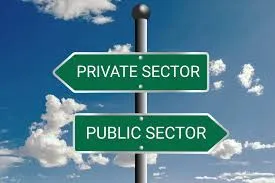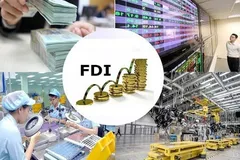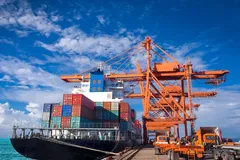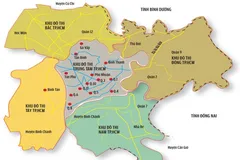
Yet the fiscal capacity of the State remains limited, making private capital not just helpful but essential. The challenge lies in how to attract this capital without compromising national priorities or public interest.
The State as Architect, the Private Sector as Builder
Mobilising private investment requires more than market incentives. It demands a carefully calibrated role for the State—not as a passive participant, but as an active architect. The government must define strategic priorities, ensure regulatory clarity, and maintain oversight, while also enabling private actors to operate efficiently and innovatively. A well-governed partnership between State and market can unlock resources, accelerate project delivery, and share risk in a way that serves the broader development agenda.
Infrastructure is the backbone of any modern economy. For Vietnam, it is also a lever for regional rebalancing, productivity enhancement, and long-term resilience. Roads, railways, seaports, airports, power grids, and digital networks are not just economic assets—they are enablers of national competitiveness, social inclusion, and strategic security.
As administrative boundaries are reorganised and urban corridors expand, infrastructure must keep pace. Strategic projects are increasingly being designed not just for efficiency, but to unlock development potential in surrounding areas—through logistics hubs, industrial parks, and transit-oriented urban zones. These assets, when well integrated, create multiplier effects across the economy.
Some infrastructure projects offer direct commercial returns, attracting growing interest from large domestic private corporations. Their emergence as major players has shifted the landscape, opening the door for more sophisticated public-private cooperation. However, private involvement is not without risks. Profit-driven operations can lead to price volatility, limited service coverage in remote regions, and potential neglect of equity or long-term sustainability.
Moreover, critical infrastructure—particularly in sectors like telecommunications, energy, and transport—intersects with national security. Full private control in these areas could undermine strategic sovereignty. Hence, while private participation is necessary, it must be carefully governed.
To ensure infrastructure development aligns with national priorities, the State must retain a central role. This includes investment in strategic projects that may not yield high returns but are vital for defence, rural inclusion, or regional equity. It also involves maintaining regulatory control and ensuring transparency in project selection, funding, and implementation.
Importantly, the State must act not just as a funder or operator, but as a planner. Infrastructure projects should be embedded in long-term national strategies that maximise land use efficiency, stimulate associated industries, and anticipate future demand. For example, a transport line should be designed not in isolation but as part of a larger logistics or urban development ecosystem.
Clear planning also enhances investor confidence. When projects are linked to broader economic strategies, private firms can better assess risk, align their own investments, and integrate operations across sectors. This shift from ad hoc development to coordinated infrastructure ecosystems marks a crucial evolution in Vietnam’s development model.
Transparency and Policy Coherence Build Investor Confidence
One of the biggest deterrents to private participation is uncertainty. Investors need access to detailed, consistent, and timely information about infrastructure pipelines. Publishing medium- and long-term plans—not just high-level visions but specific project details—can significantly improve engagement.
Transparency also reduces coordination failures. When the State outlines clear timelines, responsibilities, and financing structures, businesses can plan ahead, pool resources, and respond to opportunities with greater agility. Moreover, clear rules of engagement level the playing field between SOEs and private firms, avoiding conflicts of interest or unfair advantages.
At the same time, consistent policy reduces perception of regulatory risk. Investors are more likely to engage in long-term projects if they know that tariffs, access rights, or fiscal support will not be abruptly changed. Establishing credibility in this area is key to attracting not just domestic players, but also international capital with longer horizons.
A well-functioning infrastructure ecosystem depends on clearly defined roles. State-owned enterprises should focus on projects aligned with national defence, social inclusion, or strategic security—areas where commercial incentives may be weak. These include rural connectivity, power grid redundancy, or telecommunications in remote regions.
Private firms, in contrast, should be encouraged to lead in commercially viable ventures—urban transit, renewable energy, port logistics—where they can innovate, invest flexibly, and deliver efficient services. Reducing role overlap not only improves project performance but also helps avoid duplication of effort, resource misallocation, and regulatory confusion.
Cooperation, rather than competition, should be the principle. By recognising the comparative advantages of each sector, the State can build a more resilient and responsive infrastructure delivery model.
Beyond roles and plans, institutions matter. Investors require legal and institutional guarantees that their risks will be recognised and, where appropriate, shared. Vietnam’s regulatory framework for public-private partnerships must be continually improved—ensuring fair risk allocation, clear revenue mechanisms, and safeguards against political or regulatory reversals.
Mechanisms such as minimum revenue guarantees, cost-based pricing adjustments, and compensation for policy-induced losses can significantly lower the risk profile of infrastructure projects. Streamlining land acquisition, offering technical assistance, and expediting permitting are also powerful tools for State facilitation.
Equally critical are platforms for dialogue and accountability. Regular public-private forums, independent monitoring bodies, and fast-track dispute resolution mechanisms help resolve friction, build trust, and ensure that feedback is incorporated into policy refinement.
Vietnam’s infrastructure challenge is not simply about mobilising funds—it is about managing a complex interaction between the public interest and private initiative. When done well, this interaction yields infrastructure that is not only efficient and profitable, but also equitable and secure.
The visible hand of the State provides direction, coordination, and oversight. The invisible hand of the market brings innovation, capital, and agility. When these two forces are aligned through clear rules and shared objectives, they create a development model that is both dynamic and inclusive.




















